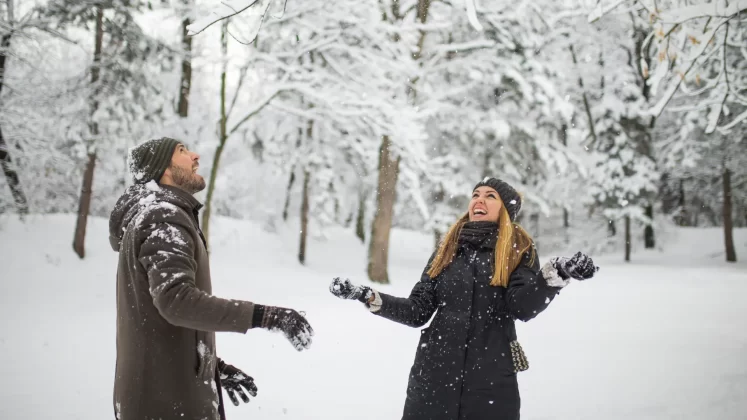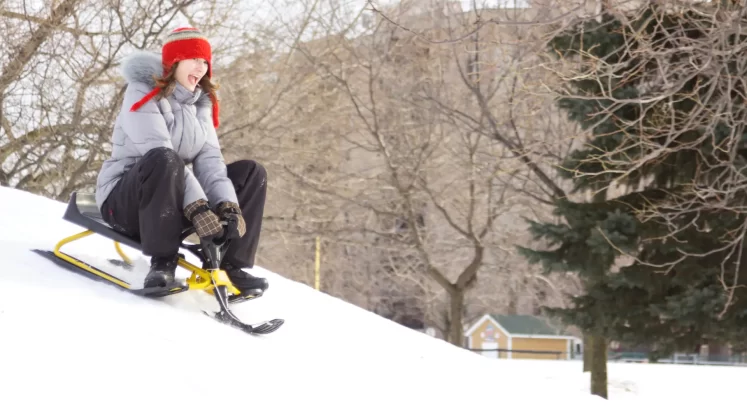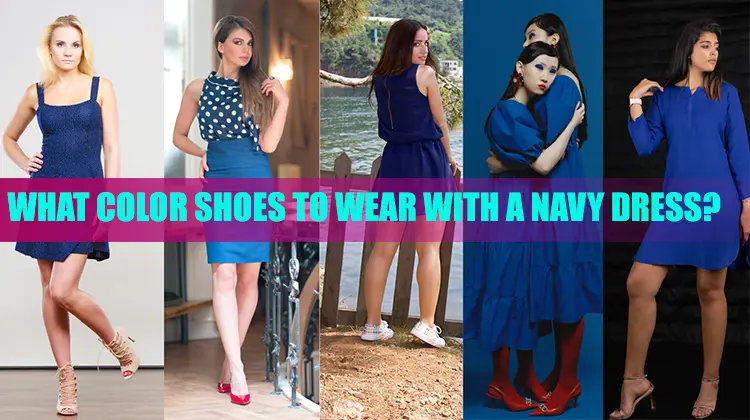What To Wear In Snowfall? Best Winter Wardrobe Wonders
The snow is one of the best things about winter. You’ve probably heard the saying “as white as snow.” One thing more comes to your mind what to wear in snowfall? Additionally, you must dress appropriately for the snowy weather if you want to have fun. It is the time of year when we get ready for trips to wintry wonderlands.
This season, we can look forward to picturesque small towns with twinkling lights, warm cabins, and snowy slopes. But is there one thing that drives us to give up and plan a vacation to Bali? Knowing exactly what to wear in the snow and being able to fit all of those winter clothes into one suitcase! The following video could assist in getting you started.

It is possible to look stylish in the snow, and it can even look really cute. With the aid of our guide to snowy fashion, you can look like a stylish hiker or a snow bunny amidst the white powder.
You can wear jeans (with tights underneath to stay warm) or snow-heated pants, depending on how cold or snowy the weather is. Wear them layered with a sweater over a cotton long-sleeve t-shirt or a merino wool base. So this winter, make room in your wardrobe for it. You should include some clothing for the upcoming snowy weather.
What To Wear In Snowfall?
It’s time to plan how to pack all those layers and bulky jackets now that you know what to wear in the snow!
Tip for what to wear in snowfall:
- Select the Appropriate Travel Bag or Wardrobe
- First, the boots
- Incorporate Dense Fabrics
- Initiate the Addition of Accessories
Finish With Squishable Objects It is quite unsettling to think that we can fit everything we need in one bag, including bulky sweaters, heated pants, heated electric vests, heavy jackets, and snow boots, which take up a lot of space when packing. But worry not, style enthusiasts! We can assist you in packing chic essentials that will make you appear like adorable little snow bunnies while also helping you save a significant amount of money.
- How to Prevent Freezing in Cold Weather?
- Severe Cold Conditions Strategies for Clothes
- How to Pack Lightly for Winter?
- Winter Travel Shoes That Are Best Options for Winter Clothing in the Snow

Foundational Layers
For those cold, windy days, lightweight, breathable underlayers like thermals, fleece, and merino wool are essential for keeping you warm and dry. If it were to rain or snow continuously, the last thing you want is for your skin to get soaked through your outer layer. Because of the possibility of freezing, this layer is crucial for both the top and bottom. Your base layer will shield you from any weather conditions you may encounter during the day, even if your plans are just for a leisurely excursion around the resort or mountain.
In-between Layers
Following the base layer are the mid-layers. Therefore, sweaters or hoodies would be the best options for mid-layer clothing during snowy weather. This layer will cover your thermal underwear and help retain the heat. Depending on your activity level and preferences, fleece or down would make excellent mid-layer materials. Wool works well for sweaters as well. The perfect mid-layer clothing for snowy conditions provides outstanding warmth. Thus, for this winter layer, invest in lightweight fleece, merino, or down materials. You want your mid-layer to be warm, breathable, and lightweight.
External Layers
And lastly, you need to have room for an outer layer. Of the three winter layers, this one is the outermost. On this layer, coats and jackets are common. For this reason, it works well on clothing for winter. It ought to be strong enough to block the wind, rain, and snow. Any winter climate that reaches its peak requires jackets. However, you shouldn’t be shocked by the first pair of heated jackets you come across. Both insulation and waterproofing are qualities your jacket should have. Down is a fantastic insulator and works well in dry environments.
That’s because once it gets wet, its insulating qualities will be lost. A highly functional, insulated snow jacket might be something to think about if you intend to go skiing, snowboarding, or sledging. If so, you should look for one that doesn’t feel heavy or retain sweat or moisture. You can also wear your ski jacket with a pair of insulated, windproof ski pants.
They come in handy both when you fall off your skis and on the chairlift. They will enable you to stay dry and warm for extended periods. In the winter, you have to be mindful of your feet as well. They require warmth and weather protection. You will get frostbite if you expose them to any danger.

Check out the following selections for winter footwear.
Boots with insulation
For winter conditions, insulated boots are warmer than typical leather boots. These boots have linings made of wool, fleece, or synthetic materials. To keep the snow out, they should be slightly longer as well.
Socks
You need the appropriate pairs of socks for snowy weather in addition to the boots that fit you best. Merino wool socks provide natural odour resistance, moisture absorption, and warmth for your feet. Therefore, everything is win-win.
Accessory Items for Winter Weather, Along with Clothes
When it snows, accessories will be a useful addition to your wardrobe. Don’t undervalue the significance of appropriate winter accessories.
Beanie
Beanie winter accessory is cosy, fashionable, and warm headwear for snow. They will shield your head from snow, rain, and wind. Eliminate any potential opening that could allow air to enter. Extend your beanie to cover your ears if it is long enough. Another adaptable item that goes well with many different outfits is a beanie.
Gratton Neck
Comparing neck gaiters to scarves, there are a few differences. A neck gaiter will cover the areas up to your neck while remaining firm. You won’t be distracted by it when snowboarding or skiing. Merino wool is a lightweight, warm fabric. You can look put together by wearing your jacket with a neck gaiter. It will fit in your backpack without taking up much room, even if there are no snow sports.
Balaclava
Another helpful winter accessory for extreme heat is a balaclava. It can completely enclose your face, revealing nothing but your eyes. Although they aren’t necessary, a fleece balaclava can add a pleasant layer of warmth. It is best worn underneath your ski helmet on really windy and cold days. It’s also excellent for people with dry, sensitive skin.
Electric Gloves
Another classic winter necessity is a pair of gloves. Your hands could use some extra warmth from the gloves. Therefore, in the winter, you need to wear appropriate, waterproof, and insulated gloves. Whether you’re sledging, snowboarding, or skiing, your hands will be in the elements. Make sure the pair fits snugly and securely around the wrist. It is best to keep the heat inside and keep the snow out. Fleece gloves are very breathable and warm despite being light. These work better in mildly snowy environments.
A snow helmet
A helmet is a useful winter accessory when you’re searching for skin in the bitter cold. A decent snow helmet should control temperature and provide outstanding protection. The padding should be machine washable.
Winter Eyewear
Goggles winter accessory will also come in handy with your outfit in the event of snowfall. You’ll be able to see better through the snow if you have snow goggles designed for bright, white conditions. To begin with, you’ll need a pair that provides 100% UV protection and outstanding visibility. Furthermore, comfort is equally important. It’s usually necessary to wear the goggles beneath the helmet. Not only will goggles prevent sunburn, but they will shield your eyes from the snow.
Earmuffs
It’s also important to make sure the wind is kept out of your ears. Get earmuffs if your beanies aren’t strong enough. Your ears can be shielded from frostbite by wearing fleece earmuffs. It also enables perspiration on your scalp to evaporate.
Bandana
On a windy, cold day, a neck gaiter comes in handy. It’ll shield your face and neck. To warm the air you’re breathing, pull it over your mouth. It’s very beneficial when you first start running. For the same reason, some runners decide to cover their mouths with a scarf winter accessory. A buff is yet another practical substitute. You can wear this seamless microfiber tube of fabric in a variety of ways.
Wear Several Layers of Clothing
For children as much as for adults, layering is crucial. In the winter, kids require extra care and protection. Compared to adults, they have lower tolerance levels. They should be accessorized with three layers of clothing. If two layers are comfortable for you, add a third layer for your child. In these situations, a detachable coat liner is also helpful.
Put on waterproof clothing.
In the winter accessory, your clothing should always be waterproof. Children are also subject to this rule. If they wish to enjoy the snow, they will require coats and waterproof jackets. They must be included in their collection of winter clothing. Invest in a high-quality coat and snow pants that are rated for a particular temperature.
They ought to be wind- and moisture-resistant as well. Based on the typical wintertime temperatures in your area, select a rating. Reapply durable water repellant (DWR) to outerwear to make it more effective, or reapply it to an older garment to keep it functioning as intended.
Activities for Winter in the Snow
When there is snow all around you, you can enjoy yourself the most. However, that is only true if you are dressed appropriately for the snowy conditions. With this lovely weather, there are plenty of winter sports to try. Here are a handful that may pique your interest:

1. A sledge
In the winter, sliding through the chilly air can be a wonderful experience. So find a nice hill and gather your gear so you can experience some excitement. Any age group can enjoy sledging. However, toddlers ought to be accompanied by a parent. Additionally, as you’ve read, children should dress in layers to stay warm. You are also subject to this rule.
2. Skating on ice
For novice skaters, ice skating can be challenging. It’s a risky pastime to engage in. The majority of people begin with hockey or figure skates.
3. Snowboarding
Another well-liked winter sport to partake in is skiing. Wearing appropriate clothing for snowy conditions is essential when skiing. Wearing layers is the key to a successful wintertime adventure.
4. Building Snowmen
When the snow falls, both adults and babies will enjoy building a few snowmen. To create the body, stack a few enormous snowballs. Then, to make it come to life, keep an eye out for sticks, berries, fruits, and vegetables.
FAQs
Can I go skiing in my jeans?
Store your leggings, track pants, and other material-absorbing pants so they can be worn beneath your snow pants. Wearing jeans with an additional layer of snow pants can make you feel even more rigid and make it harder for you to move and turn on the slopes. Avoid wearing jeans at all costs.
Which shoes go best in the snow?
You can wear rain, snow, or winter boots. But for light rain or snow, rain boots are necessary. They are waterproof and have a thick sole that provides good traction.
Are shoes suitable for snow conditions?
Most shoes aren’t designed to withstand snow. They may get damaged or stop providing the proper warmth, dryness, or support for your feet.
Are leggings inferior to thermals?
Where the two diverge most is in their thermal properties. Typically constructed from thermal materials like thermal wool or thermal polyester, thermal pants offer superior thermal insulation but may weigh more than leggings with a fleece lining.







